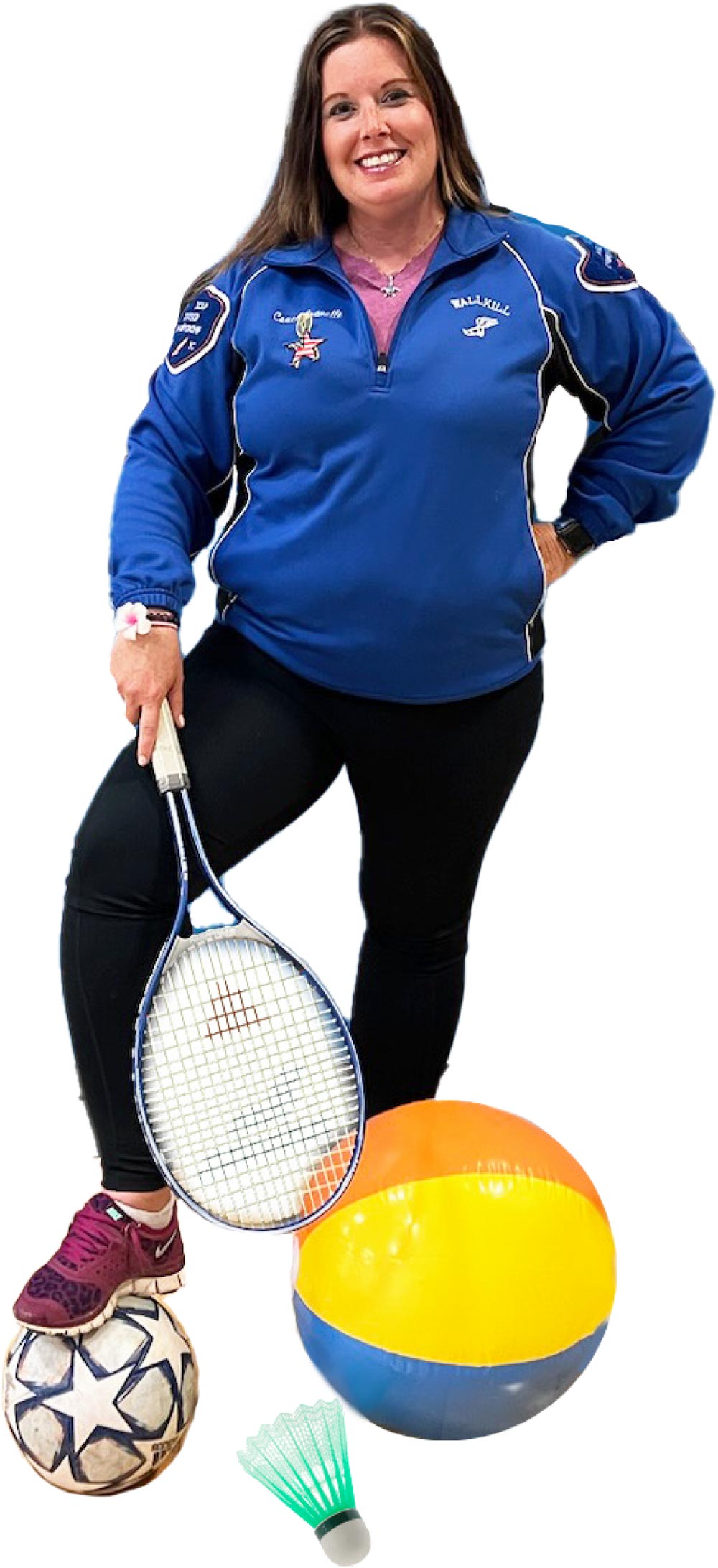5 Questions for Jennifer Gravelle

Wallkill Teachers Association
You’re a certified K-12 physical education teacher at Wallkill High School, but you also teach adaptive physical education. What’s the difference between the two types of teaching?
Adaptive physical education describes PE classes that are modified to meet students with special needs. I work with 15 adaptive PE students at the high school, and some are on the autism spectrum, some have learning and emotional needs and some have physical needs. You can either adapt instruction for one student within a larger class or teach an entire class of adaptive PE students.
How do you differentiate instruction to accommodate students with special needs?
My students like to do what their peers are doing, so we follow the regular PE units, with modifications. For instance, we play tennis with yarn balls, or play basketball with lowered hoops or use balloons instead of basketballs to shoot. We might also play volleyball but hit over a line on the floor instead of using a traditional net. I just did an all-abilities karate class and brought in an instructor from our local community to lead it.

Do your adaptive students also participate with mainstream students?
Yes. Although my 15 adaptive students have a class of their own, I bring in peer buddies once or twice a month to join class with them. These are students who come in during their lunch, or study hall, and help with class. There’s a high school life skills club called the Be-You-tiful Club, for students with special needs, and I’m involved with the sports aspect of it. I coach tennis in the fall and got my after-school sports team involved. Once word got out, many other students were eager to help. We now have about six regular education students who help with the club. The Be-You-tiful Club hosts a special event once a quarter with the school sports teams. We’ve done tennis, volleyball, basketball, and a districtwide field day with K-12 life skills students.
Now that the school year is nearly over, do you have any tips for how students can stay active over the summer?
I put together a big billboard outside my office with suggestions for how all kids can stay active in the summer. For my adaptive students, I send home a packet of fun activities they can do and suggestions for how families can modify traditional activities. For instance, having a family scavenger hunt at a local park or around the neighborhood. Badminton is also a great sport. The racquets are lightweight, and students can use a balloon to help them work on striking and hand-eye coordination. Heat really impacts some of my students with special needs so I offer lots of activities they can do indoors, like yoga, meditation and stretching videos.
Are there any organized adaptive PE summer programs that families with special needs children can check out?
I’m a SUNY Brockport graduate. They offer Camp Abilities, a one-week summer sports camp for blind, visually impaired or deaf/blind children and teens. Here in the Hudson Valley, I volunteer at Making Strides Therapeutic Horsemanship, a horse therapy group for autistic children. There’s also an organization called Beautiful People that offers year-round adaptive sports programming for children and young adults. Wii Just Dance, Wii Sports and Wii Resort Sports are always great indoor activities that can easily be done from a wheelchair or while sitting. I also suggest visiting Special Olympics to learn more about the resources they offer.